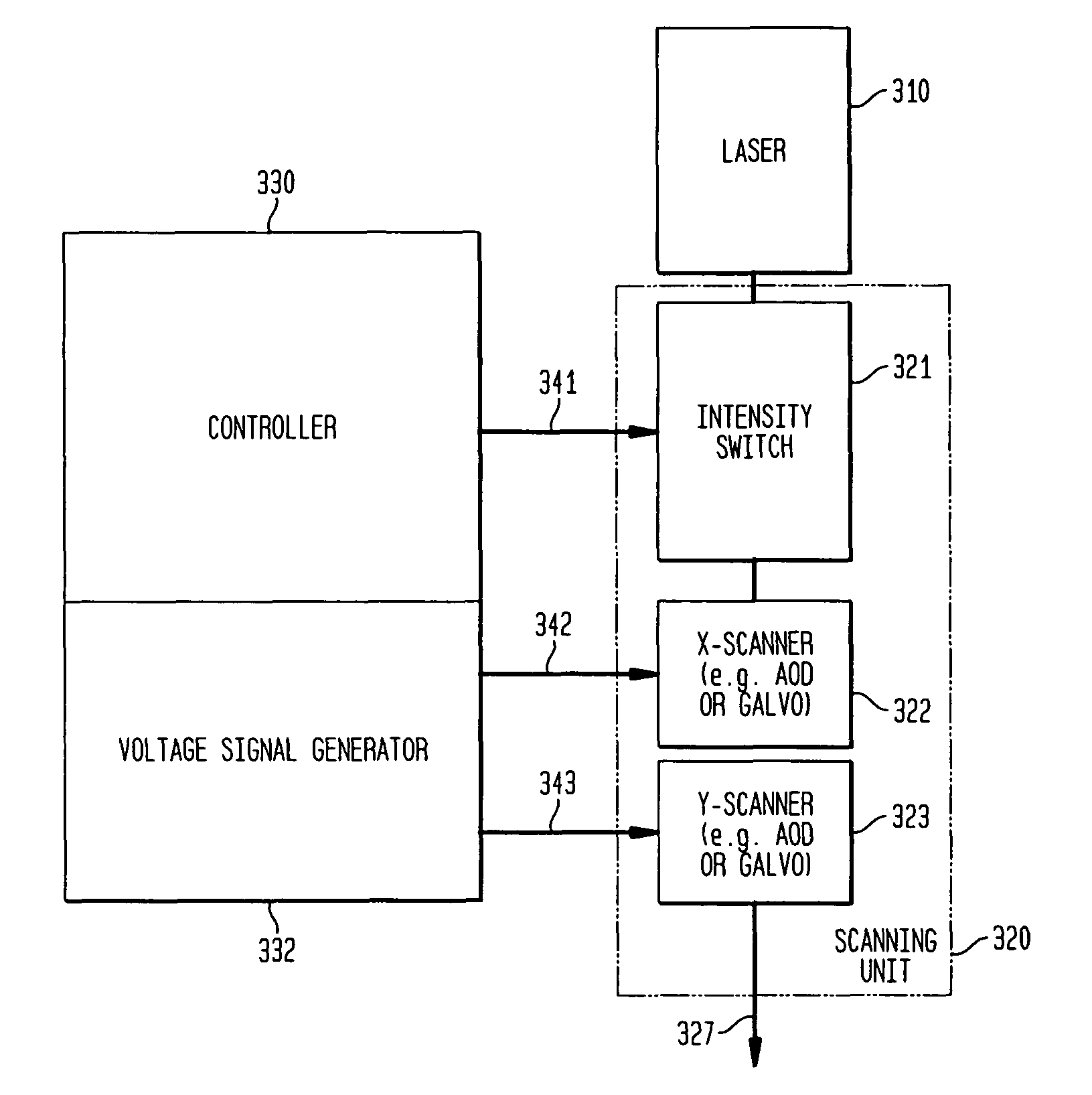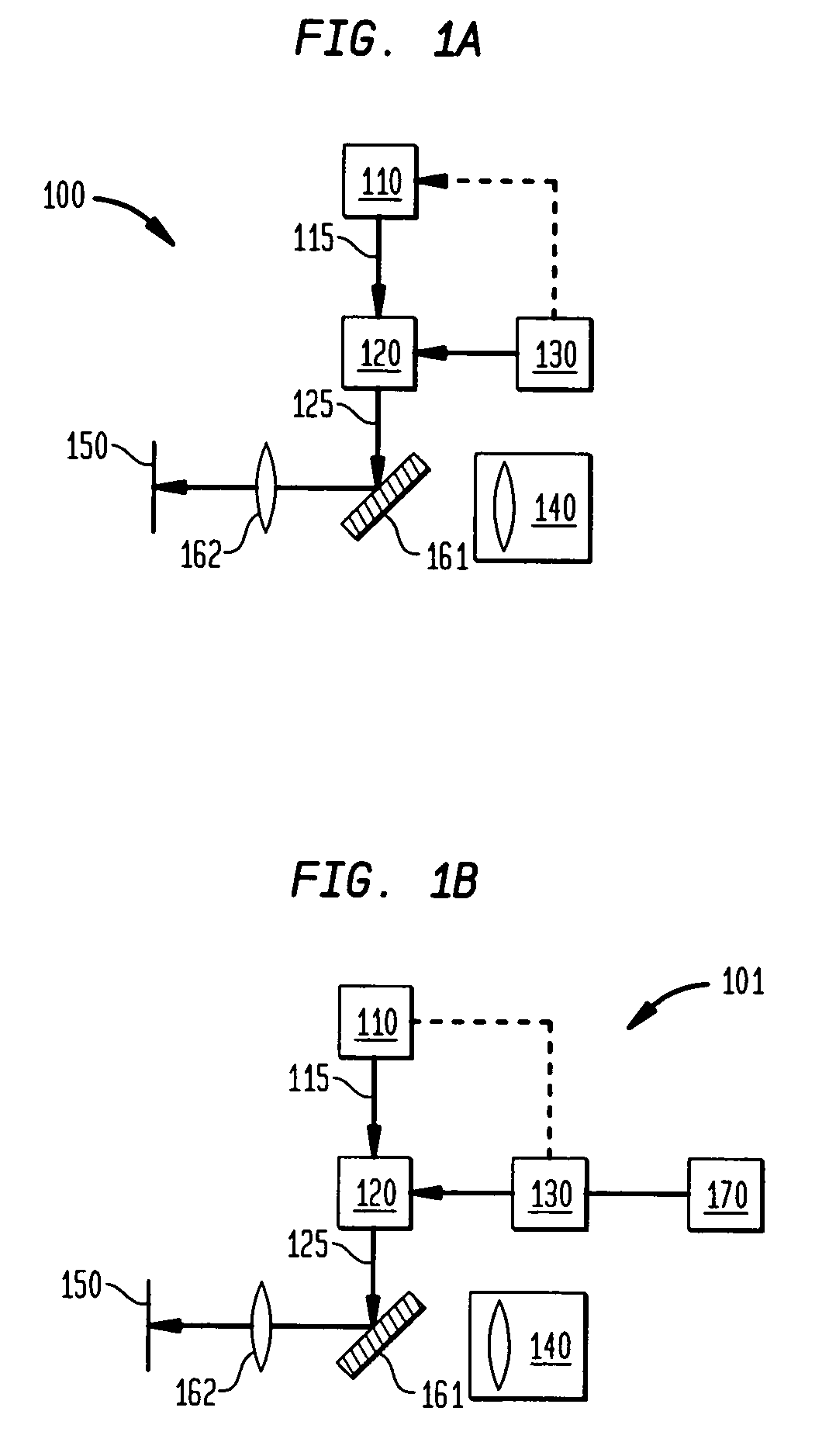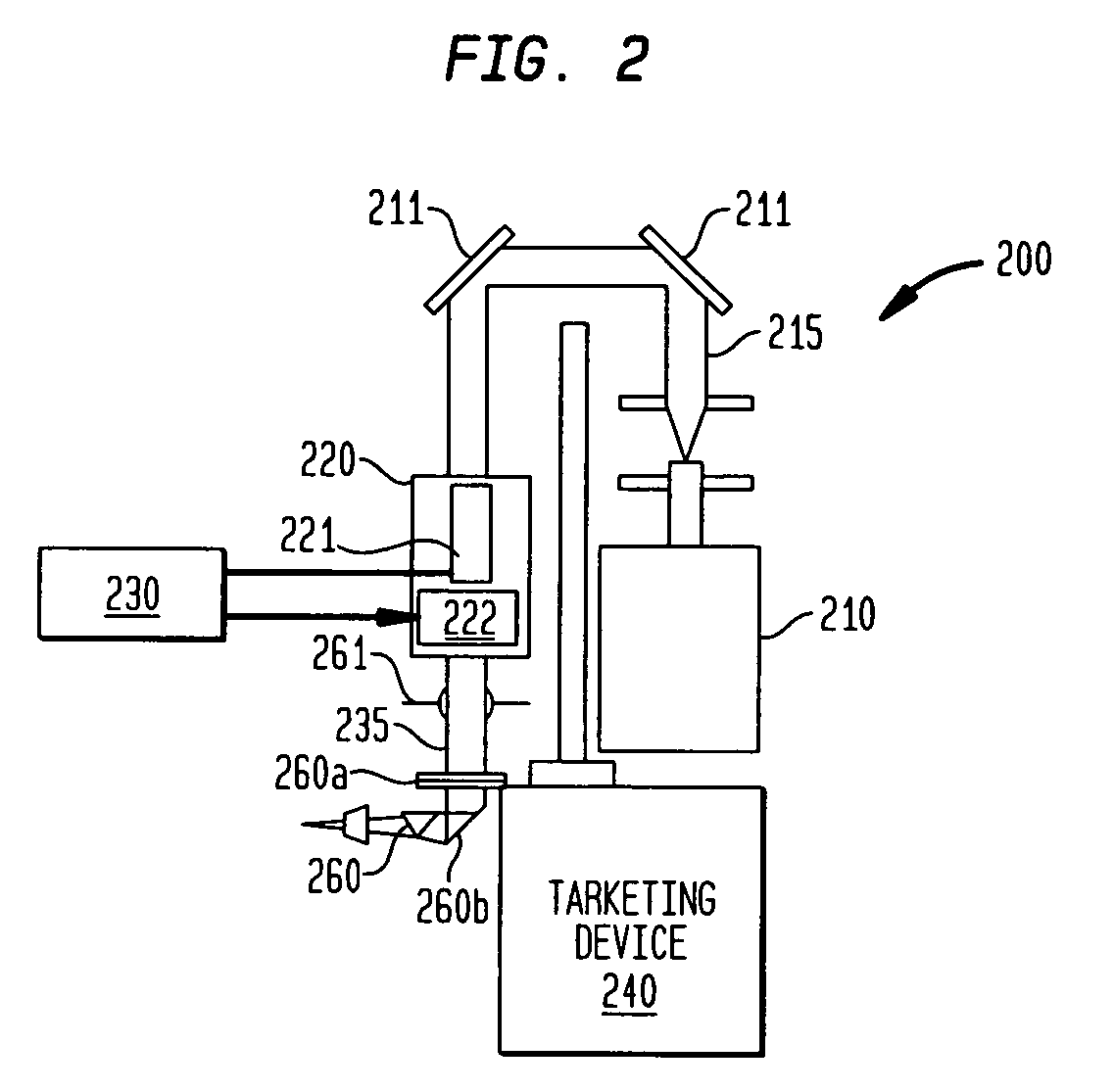Optical devices and methods for selective and conventional photocoagulation of the retinal pigment epithelium
a technology of optic devices and retinal pigment epithelium, applied in the field of optic devices and methods for applying treatment radiation to the eye, can solve the problems of blind spots, loss of visual sense, and treatment modality that is not suitable for application to the macula
- Summary
- Abstract
- Description
- Claims
- Application Information
AI Technical Summary
Benefits of technology
Problems solved by technology
Method used
Image
Examples
example 1
In Vitro Illumination of Bovine RPE Sheets
[0079]The following in-vitro experiments were performed on RPE sheets from young bovine eyes.
Optical Device
[0080]A schematic diagram of the bench top optical device for the in vitro experiments is shown in FIG. 5. A 5 W cw laser (VERDI, Coherent, Santa Clara, Calif., USA) served as a laser source for the illumination. An Argon Ion Laser (INNOVA 90, Coherent) at 488 nm, delivered through a multimode fiber, was used for excitation of the fluorescent cell viability probe as described below. A custom-built compound fluorescence microscope was set up to capture fluorescence images before and after illumination.
[0081]A two-dimensional (2D) acousto-optic deflector (AOD) was used to generate the scan pattern by mounting two AOD crystals (2DS-100-35-.532, Brimrose, Baltimore, Md., USA) perpendicular to each other to allow two dimensional beam movement. To control the 2D-AOD, four electric signals are needed: one frequency modulation (FM) signal per c...
example 2
In Vivo Illumination of Rabbit Eyes
[0093]The following in-vivo experiments were performed in rabbit eyes.
Optical Device
[0094]For the in vivo experiments, an optical system was developed to fit on top of a slit lamp as shown in the schematic diagram of FIG. 7. Such a system is considerably smaller than the bench top system utilized with the in vitro experiments. The emission (532 nm) of a cw-laser (VERDI V-10, Coherent) was coupled into a polarization maintaining single mode fiber (PM fiber) (HB450, Fibercore Ltd., UK). PM fiber was employed to preserve diffraction limited beam characteristics and because linear polarization was required for optimal operation of the AOD. Its use limited the power that could be delivered to the setup to about 300 mW. With a typical diffraction efficiency of two AODs (64%) the highest possible power entering the eye was 185 mW.
[0095]A scanner design as utilized in the in vitro experiments was mounted with its mechanical components, collimating and focu...
example 3
In Vivo Illumination of Rabbit Retina using a SEP Scan Pattern to Achieve Selective Targeting and Thermal Coagulation
[0107]Rabbit retina was illuminated in vivo using a SEP scan pattern to achieve selective targeting in one instance, and thermal photocoagulation in another instance. Histological sections of the irradiated areas were prepared after irradiation to assess the laser-induced damage.
[0108]FIG. 9 presents a histological section of selectively damaged rabbit RPE cells using a SEP scan pattern. The beam had a dwell time of 7.5 μs and a fluence of 470 mJ / cm2, the latter corresponding to about 1.5 times the ED50 fluence. Ten repetitions of the SEP scan pattern were performed. The arrows point to individually damaged RPE cells. The photoreceptors are intact. In contrast, FIG. 10 presents a histological section showing coagulated photoreceptors using a beam dwell time of 30 μs. Ten repetitions were performed using a beam fluence of 1800 mJ / cm2 (about 3 times the ED50 fluence). T...
PUM
 Login to View More
Login to View More Abstract
Description
Claims
Application Information
 Login to View More
Login to View More - R&D
- Intellectual Property
- Life Sciences
- Materials
- Tech Scout
- Unparalleled Data Quality
- Higher Quality Content
- 60% Fewer Hallucinations
Browse by: Latest US Patents, China's latest patents, Technical Efficacy Thesaurus, Application Domain, Technology Topic, Popular Technical Reports.
© 2025 PatSnap. All rights reserved.Legal|Privacy policy|Modern Slavery Act Transparency Statement|Sitemap|About US| Contact US: help@patsnap.com



